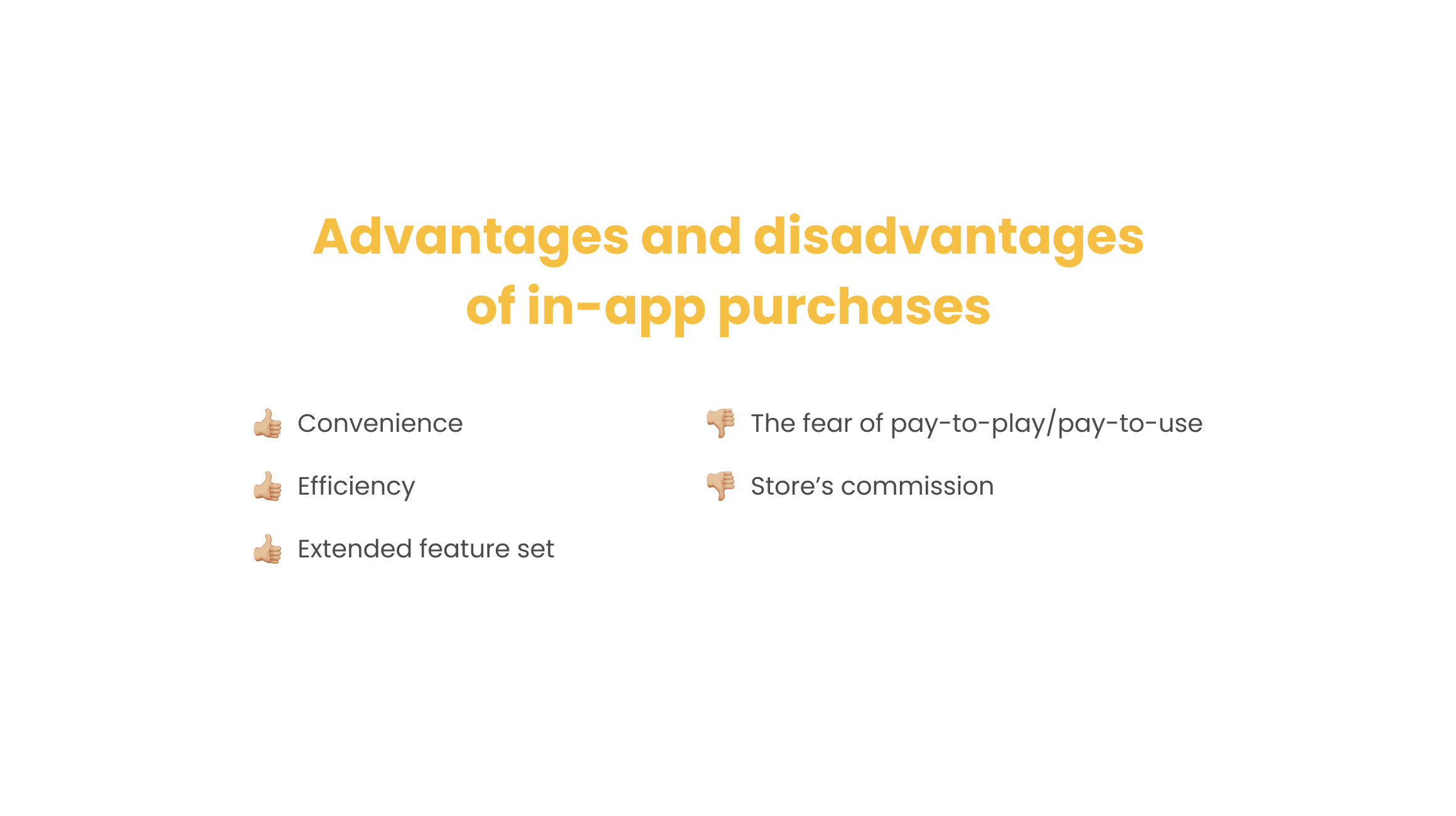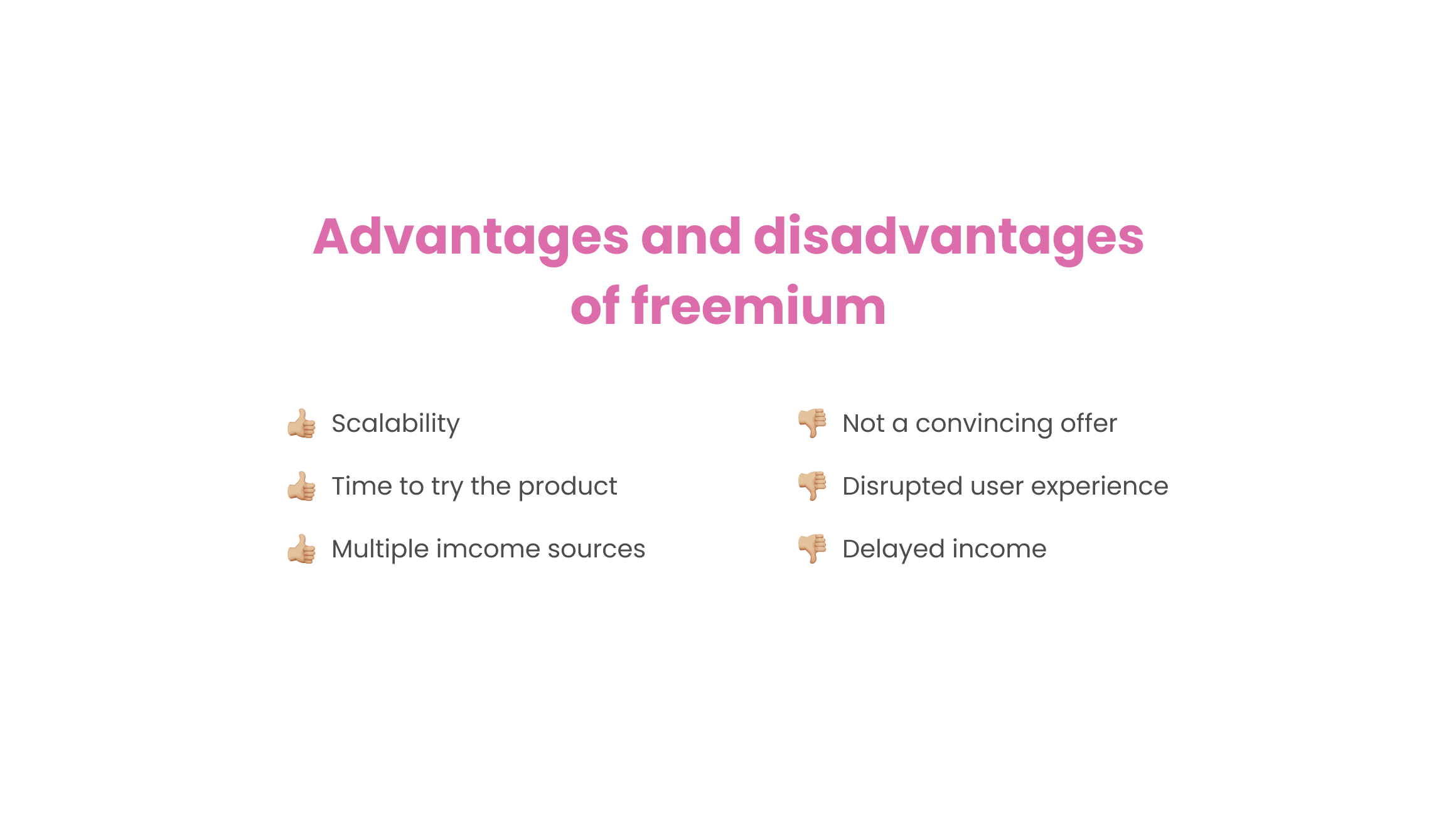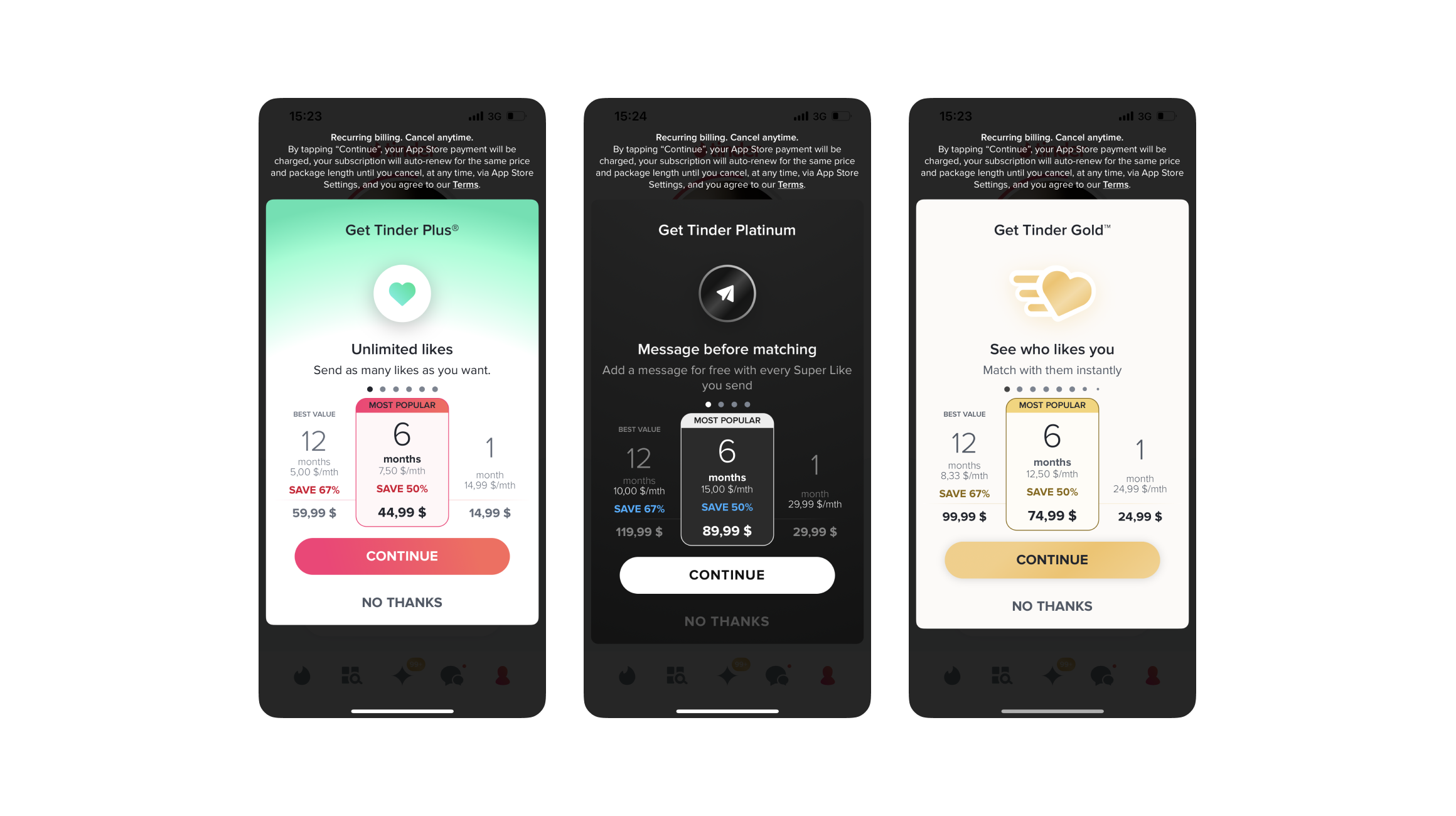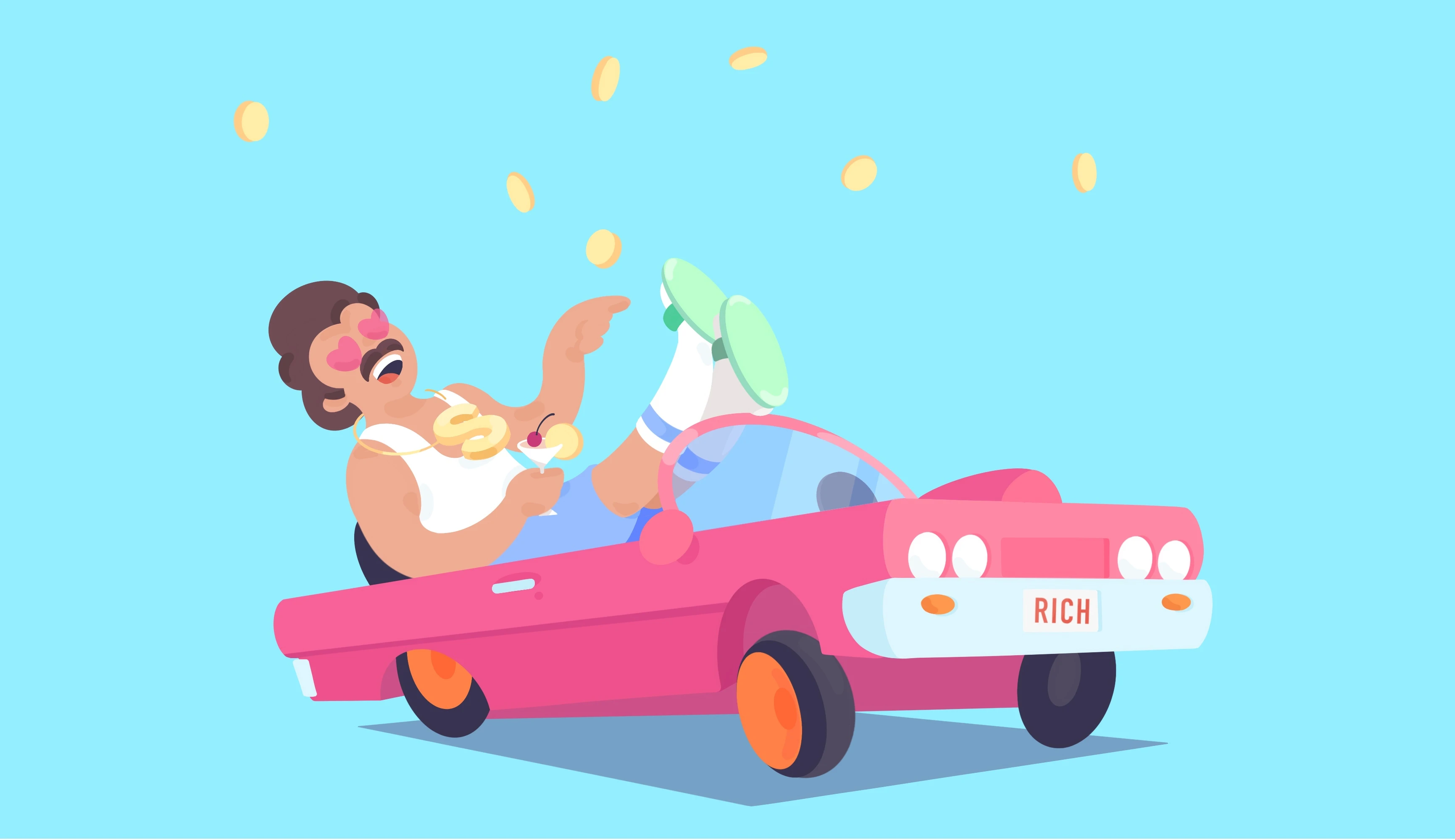- What we do
- Services
- Solutions
- Our Works
- Company
- Contact Us
September 20, 2022
How to Monetize Your Mobile Apps: Best Strategies to Make Money
Creating an amazing bug-free mobile app with a superb UX is great but how can you make it profitable and not disrupt customer loyalty? Take a look at the most popular mobile app monetization strategies and learn how to monetize yours!
The mobile app market is thriving, offering immense opportunities for developers and businesses to generate revenue. With millions of apps available across platforms, finding the right monetization strategy is essential to stand out and achieve financial success. Whether you’re an independent developer, a startup, or an established business, understanding the most effective ways to monetize your app can make the difference between a modest income and a highly profitable venture.
Despite the fact that every day we see new products on the market and some of them are really cool, only a small percentage generates profit. It goes without saying that the competition is very high and rates will be rising. Each category in app stores is full of thousands of similar solutions. Seamless user experience has become the main requirement. And now it’s impossible to imagine success without thoughtful marketing and analysis of user behavior.
We know how to build a great mobile app that will attract users and add value to them. But we also know that it isn’t enough to make a quality product—it should recoup the investment and bring income.
And here comes a question: How to earn money on a mobile application and choose between numerous monetization strategies? In this article, we’ll consider the best ways to monetize an app for the upcoming years.
The best mobile app monetization strategies
There are so many ways for the monetization of mobile apps that a naive user can get confused. That’s why we identified the most successful strategies and described them below. What’s more, you will learn how to make them work for you and generate profit. Let’s get started!

1. Advertising
Now people spend hours a day on their smartphones. No wonder many advertisers try to catch their attention there. The most common ways to integrate ads into your app include:
- Banner ads
Banner ads are the easiest ones to implement in a mobile application. They are small rectangles will images and text located at the top, side, or bottom of the screen. There are several reasons for this type of ads to be popular: They are easy to launch, relatively cheap, and supported by all platforms.
However, you should know that app banner ads can negatively influence the user experience. They will occupy a certain screen space, so be careful when planning to add banners to your app.
- Interstitial ads
You have also seen this type of ads. They appear at a certain point of the user journey and occupy the whole screen. After several seconds, the users will have to either close the ad or interact with a CTA. On the one hand, it will grab the full attention of users, but on the other, it can become annoying if used too often.
- Native ads
It’s clear from the name that this type of ads integrates smoothly into the UX so the experience will be as seamless for a user as possible. Since native ads do not disrupt anything in your app, they will not be as annoying as the previous types. Also, they will be the most efficient for both you and the one who advertises in your app.
- Affiliate ads
You can realize this model if you have partners who would like to advertise inside your app. Affiliate ads will lead people to your partner’s website to make a purchase. However, since you will get commissions only from purchases, not clicks, you need to carefully choose what to advertise inside your application.
Advertising is one of the most popular and simple ways to monetize mobile free apps. You don’t have to reinvent the wheel and think through a complex strategy if this model suits you. It seems to be quite easy, doesn’t it? But there are some pitfalls you should keep in mind.
First and foremost, people don’t like ads. Especially if they are too annoying, videos last long seconds (6-10 is too much), and banners are too big. In addition, they are becoming irritated when they see advertisements for a completely different audience. Imagine, an animal rights activist sees an obsessive ad for a modern e-collar when playing a game. This user experience can be called horrible, don’t you think?
Users are willing to put up with ads and forgive the product founders for the possibility to use it for free. But if they see something which totally disrupts their experience, they will just stop using your app and delete it.
Some recommendations for integrating ads:
- Use adaptive banners
- Use interactive advertisements
- Provide software engineers with the ability to control ads so that they can control the layout and ad display for users
- Use A/B testing
- Don't overload your product with advertising
- Switch ads on when you’ve already gained a large, loyal audience (50,000 is okay)
Despite some implementation challenges, this monetization strategy has remained one of the most popular for years. The integration is pretty simple, people don’t have to pay for using the app or some of its content or features, and you can use A/B testing for defining the best ways for placing advertisements. So, when choosing this model, think twice about how to integrate it without harming customer loyalty.
Advantages of ads
Here are some benefits of in-app advertising that you will see if you decide to implement this monetization model:
- Great results
Even though a lot of people associate in-app ads with web banners, they work a bit differently. Also, in-app advertising shows better results than banners on web pages.
- More specific targeting
If you show relevant ads to your app users that they are willing to click and visit the landing page, your marketing strategy will be more efficient.
- Ease of implementation
In-app advertising is one of the easiest ways to monetize your app. This method is universal since most mobile platforms and apps will support one or another kind of ads.
Disadvantages of ads
When implementing in-app ads as a mobile app monetization model, you need to bear in mind the following drawbacks:
- Promoting your competitors
It may happen that your direct competitors will end up advertising their products and services in your application. So they can grab the attention of your users and lure them away from you.
- Low response level
Even if the ad occupies the whole screen space, the conversion rate may still be low. A CTR of 1.5% is considered good for in-app ads, so the engagement will not be huge.

2. In-app purchases
In-app purchases are another popular app monetization strategy. A user doesn’t pay for downloading your product but can buy real and virtual items, for instance, virtual currency, points, stickers, superweapons, or extra lives in a gaming application.
The in-app purchases app monetization model will suit you if:
- You have a mobile gaming, dating, instant messaging, or shopping app. Here, we imply app categories that are about large audiences, communications, and entertainment.
- Purchasing items offers something really valuable. For example, the number of user lives in a game has ended and a user doesn’t want to start everything from the very beginning. Instead, they prefer to buy extra lives.
When integrating this mobile app monetization strategy, you should solve the main challenge—finding a balance between paid and free items. Don’t provide a lot of cool things for free and remember that things that users buy should add real value so that they will be willing to spend their money and be happy.

Advantages of in-app purchases
In-app purchases have several indisputable advantages to offer your business:
- Convenience
Users don’t have to leave the app if they need to purchase something, even if it's additional lives for the game.
- Efficiency
Games and gamified apps will benefit the most from this way of monetization. Invesp states that purchases made inside the app account for 48.2% of mobile app earnings.
- Extended feature set
If you decide to implement this feature, your app developers and designers will have enough space to experiment with the format and looks of purchases.
Disadvantages of in-app purchases
Possible negative aspects will include:
- The fear of pay-to-play/pay-to-use
If users notice that you offer some items for sale, they may think that they will definitely need to buy them to succeed in the game or use the app correctly. You will need to balance your app in a way that purchases will not be the decisive factor for the positive experience.
- Store’s commission
Stores charge commissions for in-app purchases (for example, App Store and Google Play have a 30% fee), so you will also need to balance the price to receive decent revenue and not scare users away.

3. Freemium
“Freemium” is a merge of the words “Free” and “Premium”. It combines the possibility to download the app for free and optionally upgrade it to the premium version with additional features.
Some recommendations for using the Freemium way to monetize your app:
- Find a balance between free and paid features. Users must have the ability to use the app—its basic functionality—for free. But if there are too many features for free, there won’t be a reason to buy a premium version.
- You can use ads in a free version and suggest a “no advertising” feature in the premium version.
Many famous mobile applications use this monetization model, including Spotify Music, Angry Birds, Evernote, DropBox, MailChimp, and Tinder.
Advantages of freemium
Here is what you can get if you implement a freemium monetization model:
- Scalability
Freemium allows a new product to easily scale up and gain more users without additional expenses on sales and marketing.
- Time to try the product
With freemium, your app users will have enough time to try the product before deciding whether to pay for further use or not.
- Multiple imcome sources
Besides premium features, you can implement other monetization stratedies like ads. It will motivate users to buy a premium version.
Disadvantages of freemium
The possible drawbacks of this strategy will include:
- Not a convincing offer
It’s possible that your users will not be interested in buying a premium version. You have to think of a feature set that will be attractive enough to pay for.
- Disrupted user experience
If you decide to implement another monetization method in a free version, the users can get annoyed by constant ads or purchase offers.
- Delayed income
Since the users will start with a free app and not all of them will move to a premium version, you will have to wait to start getting any app revenue.

4. Pay per download
For now, pay-per-download is the easiest mobile app monetization strategy. But it has some obstacles for product owners. Since users have to make a payment to install an application without the possibility to try it for free, their willingness to spend money often equals zero. As a consequence, 90% of installs are less than 500 times a day.
When this way to monetize an application will fit you:
- When your product offers some cool unique functionality and stands out among its competitors.
- If you have a strong PR presence and high brand awareness. If your company or product is famous and loved by users and now you’re developing a mobile app, they will be more willing to pay.

Let's see how to earn money with mobile apps using pay per download:
- Create a catchy clear description of your product and its screens.
- Create a short engaging video and upload it on the App Store or Google Play and on all places with your app (landing page, other app stores, press releases, etc.).
- Launch an app marketing campaign, build strong brand loyalty. Use all channels which include social media, press releases, targeted advertising, influencers, app ratings, and more.
- Ensure that a mobile app cost matches the value that it offers.
- Take care of the highest quality — the presence of bad user reviews can kill your product.

Advantages of pay-per-download
The most prominent advanatge of paid apps is:
- Stable revenue
With pay-per-download, you can be sure that you will get money when people donwload your app.
Disadvantages of pay-per-download
To reach this one benefit, you will need to take the following into account:
- Brand recognition required
Users are not willing to pay for something they don’t know. If you don’t have enough recognition among your target audience, pay-per-download will be inefficient.
- A convincing offer required
Paid apps should solve as many pain points of users as possible. If a user can find free apps that does the same things as your solution, they will opt for your competitor.

5. Subscription
Among app monetization models, this may be one of the most efficient ones. Subscription offers both free and paid content. This is the most popular application monetization strategy for drop-in audio chats and streaming services. Fitness apps, news portals, cloud services, image and resume creation services such as Canva, and world-famous online magazines like Wall Street Journal, Telegraph, and The NY Times also use this model.
You should use a subscription to monetize your app when:
- You have a content-driven application which means that it is focused on such things as music, video, news, articles, or entertainment.
- Your app has a high number of downloads or you’re going to attract them.
How to achieve success using the subscription mobile app monetization strategy:
- Offer a free trial period so that users can try it.
- Provide your users with different plans to subscribe to your service, for instance, for a month, six months, and for a year.
- Make the price lower, as a paid subscription period is longer.
Advantages of subscription
Subscription is useful for the following reasons:
- A stable income stream
When you have a certain number of subscribers which is constantly increasing, you will have a constant and predictable income flow.
- Attracting users
An option of subscription will attract free users and keep them in the app long enough for them to subscribe to your app.
Disadvantages of subscription
However, a subscription model is not perfect, and this is why:
- Constant updates
Your users will pay you weekly (or monthly), so they have a right to expect new content from you on a constant basis. Simple bug-fixing won’t be enough.
- You will still need a free version
Just like with the freemium model, you will need to show the users what they are going to pay for. Without a free trial period, you have lower chances to get app revenue from subscriptions.

6. Sponsorship/Partnership
Sponsorship is one of the newest ways to monetize a mobile solution. To integrate this model, you partner with a company that pays you for having their content in the product. This monetization strategy works best if you have a large user base. The key challenge here is to find the company whose user base aligns with yours and who will be ready to pay you.
This monetization strategy is perfect for popular event applications. Businesses and brands—event partners or sponsors—pay for integrating their content (link to the website, product lists, etc.) into your application.
Fitness apps can also take advantage of using this model. Say, you have a fitness application. In this case, partnering with people (e.g., bloggers) and businesses associated with sports, healthy lifestyle, or healthy nutrition will be reasonable.
This strategy is a good way to drive user attention and earn money. The main advantage of this strategy is that people are generally loyal to seeing relevant/valuable content.

Advantages of partnership
If you have reliable partners or sponsors, they can help you in the following ways:
- Specific targeting
Sponsored ads can be targeted to a specific audience so the conversion rate will be higher. It will result in higher income for both you and your partners.
- Brand loyalty
Sponsored ads can build a sense of loyalty among users.
- Mutual promotion
Sponsor ads don’t mean you will only have to promote your partners in your app. They can also give you additional shoutouts to attract more users to your solution.
Disadvantages of partnership
The app monetization via sponsorship has the following disadvantages:
- Finding sponsors
It can be difficult for a new project to find sponsorships. To generate revenue, you will have to find not just random sponsors, but the ones who are relevant to your product and have a more or less similar target audience.
- Can become annoying
Sponsorship ads are still ads. So you have to choose wisely what and how to advertize on your app’s screens.

How to monetize your mobile app in the years to come
When choosing between multiple app monetization models, you should make several important things. First and foremost, take a look at your competitors. How do they earn money from their applications? How do they promote them? What marketing channels do they use? Find startup/product success stories and see what helped them attract users and generate profit.
Keep in mind that a certain monetization strategy suits certain kinds of apps. A subscription or freemium model is preferable for audio and video streaming solutions. At the same time, pay-per-download won’t be okay for them as the market is full of similar products that are for free.
When your app developers are building an app, integrate user analytics tools like Flurry, Localytics, Mixpanel, or Tenjin into your MVP (minimum viable product). The earlier you will get the ability to analyze user behavior—the better. It will allow you to understand the audience’s needs and expectations and make changes in your application accordingly.
Conduct A/B testing to test various options and define the best way to monetize your product. For instance, you can show the price of $2 for upgrading to the premium version for one group of users and $3 for the other. If the number of purchases will be equal, set a price of $3. The plus here is that there are many A/B testing tools that you can use for free.
These steps will help you monetize your app right and earn income. As there is no universal way that will definitely and immediately bring success, be ready for testing various things. Remember that a large and loyal user base is crucial.

Tinder's monetization strategy
For today, Tinder is the most popular dating application worldwide. It is noteworthy that it reached a tremendous success within five years. Every day, it generates millions of dollars in revenue mostly due to its app monetization strategy.
Tinder Plus is a subscription model that expands some free features and provides users with access to the premium functionality. It costs $10 per month for people under 30 years old and $20 per month for users over 30.

In return for this amount of money, people receive an unlimited number of swipes, five super likes per day, the ability to undo a past action, change a geographical location, boost their profile in the search, and many other cool things. This service brings Tinder’s owners the majority of the entire income.
Final thoughts
As you can see, there are many different alternatives to earn money with iOS and Android applications. A challenge is to choose the right monetization strategy for your product.
Before implementing it and even before software development, make competitor analysis, define the project's main tasks and features, and think through how it will add value to users. When your app is ready, you should integrate user analytics and hold A/B testing to understand your audience’s needs and preferences. You can also try data monetization, but your users need to know what data you collect and how it’s processed.
If you have questions about ways to monetize apps or have an idea for building your own product, feel free to contact us. With our extensive expertise in delivering quality mobile applications and keeping pace with the app monetization trends, we will be happy to help you!

Got a project in mind?
Fill in this form or send us an e-mail
💰 What is app monetization?
💰 What are the most common app monetization models?
💰 How can I choose the right one?
💰 What is a good example of app monetization?
Subscribe to new posts.
Get weekly updates on the newest design stories, case studies and tips right in your mailbox.
